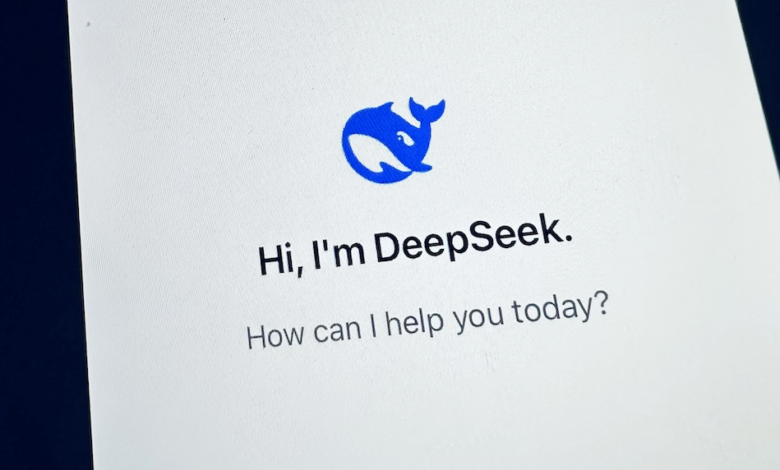
DeepSeek’s arrival did not exactly go unnoticed. Its debut flooded headlines, sparking panic across Silicon Valley. Its open-source model has incited change in how AI is adopted but its long-term impact on tech giants like Nvidia, Microsoft, and Google is not as it initially seemed.
As fears emerged that demand for proprietary AI models and high-end GPUs might lessen, Nvidia experienced stock fluctuations. Microsoft and Google, with their strong investments in cloud-based AI services, were also questioned about whether businesses would shift to self-hosted models.
However, as the dust settled, a more balanced view emerged. Despite initial fears, DeepSeek’s rise is unlikely to derail AI-driven market growth. While DeepSeek showed that high-performance AI models can run without cutting-edge GPUs, this does not reduce overall compute demand.
When it comes to the big players, Nvidia’s long-term growth remains intact, fuelled by continued demand for AI compute power. Microsoft and Google, despite facing potential short-term pressures, still dominate the AI space. So, who are the real winners and losers of DeepSeek’s unexpected arrival?
Winners: Companies and industries benefiting from DeepSeek’s rise
AI application developers and startups
DeepSeek’s open-source nature has significantly lowered the barrier to AI adoption, allowing developers and startups to build AI-powered applications without relying on expensive APIs or closed AI services. Businesses can now download and deploy DeepSeek locally, reducing long-term operational costs while maintaining flexibility.
Many startups are leveraging DeepSeek to develop AI applications such as chatbots, customer service automation, and generative AI tools. This accessibility accelerates AI commercialisation and enables smaller players to compete with larger corporations without massive infrastructure investments.
Domestic GPU manufacturers and AI hardware suppliers in China
DeepSeek’s rise has created major opportunities for domestic GPU manufacturers in China, especially as businesses seek alternatives to NVIDIA. Since DeepSeek is optimised for cost-efficient inference, companies are more willing to adopt non-NVIDIA AI hardware solutions.
Huawei, for instance, has already adapted DeepSeek to its cloud ecosystem, leveraging its proprietary GPUs to provide lower-cost AI inference services. As the global AI computing demand surges, Chinese GPU manufacturers may further strengthen their market position, especially when NVIDIA’s supply is limited or priced at a premium.
Additionally, compute rental providers could benefit from DeepSeek’s open-source model. Since enterprises can locally deploy DeepSeek rather than relying on cloud-based APIs, many may opt for flexible compute leasing services, driving increased competition and diversification in the AI hardware market.
Cloud service providers (short-term gains)
Public cloud providers such as Alibaba Cloud, Tencent Cloud, and ByteDance’s Volcano Engine are short-term beneficiaries of DeepSeek’s rise. Many enterprises prefer running DeepSeek on cloud infrastructure rather than maintaining their own GPU clusters, boosting cloud providers’ compute utilisation rates.
However, in the long run, DeepSeek’s open-source availability may erode the competitive advantage of public cloud providers, as more businesses shift toward localised deployments to cut costs and enhance data privacy.
The open-source AI community and ecosystem
DeepSeek’s emergence has been a major boost for the open-source AI community. Previously, leading open-source AI models were mainly developed by Meta (Llama) or Stability AI. Now, DeepSeek’s success has reinforced the viability of open-source AI, encouraging further innovation and adoption.
Developers can now access a powerful AI model without financial barriers, accelerating research, improvement, and new AI applications. This trend may pressure more companies to adopt open-source strategies rather than relying solely on proprietary AI models, further expanding the influence of the open-source AI ecosystem.
Losers: Companies and business models challenged by DeepSeek
Proprietary AI model companies (e.g. OpenAI, Anthropic)
DeepSeek presents a significant challenge to companies like OpenAI and Anthropic, which have built their businesses around proprietary AI models.
Traditionally, OpenAI’s GPT-4 dominated the market, requiring users to pay high API fees. However, DeepSeek’s open-source availability and lower operational costs are making businesses reconsider their dependence on expensive, closed AI services.
Additionally, DeepSeek’s performance has reached a level comparable to OpenAI’s GPT-4 o1 model, while offering significantly lower inference costs. If DeepSeek continues improving, OpenAI’s closed AI business model could face increasing pressure, forcing the company to reconsider its stance on open-source AI to remain competitive.
Chinese tech giants with proprietary AI models (e.g. Baidu, ByteDance)
Companies like Baidu and ByteDance, which have invested heavily in their own AI models such as “ERNIE Bot” and “Doubao,” now face the risk of losing their competitive edge. Previously, these companies used their proprietary AI models to create differentiation, but DeepSeek’s performance and cost advantages have disrupted this strategy.
Since DeepSeek is open-source and widely adopted by cloud providers like Alibaba and Tencent, businesses may prefer using DeepSeek over proprietary alternatives. This shift could erode the influence of Baidu and ByteDance in China’s AI ecosystem, forcing them to either pivot to DeepSeek or significantly improve their proprietary models to stay relevant.
High-cost AI service providers (e.g. Cloud-based AI API services)
As DeepSeek significantly lowers AI computing costs, traditional AI service providers face pricing pressure. Cloud-based AI API providers like Google Cloud, Microsoft Azure, and AWS, which offer AI inference services at a premium, may struggle to justify their pricing as more businesses opt for local DeepSeek deployments.
Long-term, if these companies fail to adjust their pricing and service models, they could lose market share as businesses prioritise cost-effective AI alternatives.
DeepSeek the enforcer
DeepSeek’s rise reinforces the broader trend of rapid AI implementation. Increased accessibility to AI models fuels greater demand for compute power, benefiting both cloud providers and AI innovators. Investors are beginning to recognise that while DeepSeek’s innovations are impressive, they are incremental rather than industry-defining.
Ultimately, DeepSeek’s impact on the AI market can be viewed as a catalyst for further growth rather than a disruptive force. While it has shifted some of the dynamics, it has not dethroned the key players in the industry. In this case, innovation does not mean the demise of the tech giants but rather, the evolution of the AI ecosystem to meet growing global demands.




